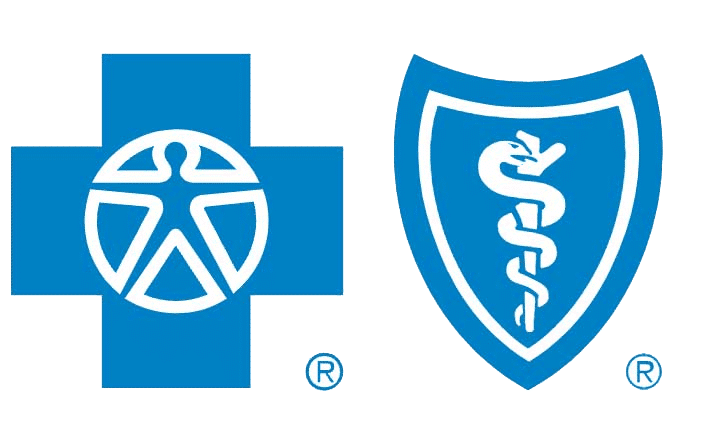What is Fentanyl Addiction?
From 2002 to 2017, there was a staggering 22-fold increase in the total number of deaths attributed to fentanyl and other synthetic opioids. The Centers for Disease Control and Prevention describes fentanyl as “the deadliest drug in America”, where it accounted for 28.8% of drug-related deaths in 2016 – putting it ahead of heroin at 25.1%.
Fentanyl is a powerful synthetic opioid that is up to 100 times stronger than morphine. Initially produced for pain management for cancer patients, it was intended as a patch to slowly release the drug into the body’s system. However, when this drug is sold illicitly, it can take different forms, including as a powder, contained in eye droppers or nasal sprays, dropped on blotted paper, or formed into pills. When fentanyl is consumed in either of these ways, the instant effects of the drug are multiplied to a dangerous level.
Because it is relatively inexpensive, fentanyl is being mixed and “cut” into other drugs. When combined with the likes of cocaine, heroin, methamphetamine, and MDMA, it creates an extremely powerful – and life-threatening – compound. Users are often left unaware that fentanyl has been added into the mix, and that it greatly increases the possibility of overdose – or even death.
Topsail: Fentanyl Addiction Treatment Center in Massachusetts
Fentanyl abuse has been tearing through communities in Massachusetts and Southern New Hampshire at an alarming rate. This drug addiction is the most damaging of them all based on death statistics. At Topsail, our mission is to help people in the community to recover from their substance abuse issues, leave fentanyl firmly in the past, and enjoy long-term recovery.
Our fentanyl addiction treatment center is based in North Andover, MA. This state-of-the-art facility is built for helping those suffering addiction to fentanyl or other opioids, mental disorders, and other substance abuse issues. When searching for a welcoming, friendly environment, one that doesn’t judge people for their current situation, you can find it with Topsail.
Our fentanyl addiction treatment program starts by the patient meeting with one of our medical professionals. After asking a few questions to gain a better idea about the level of fentanyl addiction, withdrawal symptoms, current medical health, and more, they will put together a recommended treatment plan that best matches the individual and their situation.
In terms of treatment options, we offer the following services:
Overview of Topsail's Fentanyl Treatment Programs
Full-Day treatment programs, sometimes called “partial hospitalization programs” or “PHP,” is the highest level of drug and alcohol treatment in an outpatient setting. Consisting of 5 to 6-hour sessions 5 days a week, the intensive Day program at Topsail Addiction Treatment has been created to help patients with significant addiction, and substance abuse issues. It is well suited for individuals who are either beginning their rehab journey or as a transition for people who have recently completed inpatient addiction treatment (PHP is usually the next step after detox and/or residential treatment is complete).
An intensive outpatient program, or IOP, is an immersive treatment program that helps individuals with substance abuse and addiction or alcohol problems while they live at home. IOPs are programs designed so the patient can live in their own residence or a sober living home and take part in an immersive program of continuing treatment at the facility
Weekly Outpatient addiction treatment (OP) tends to be more flexible and less restrictive than inpatient programs. Outpatient recovery programs usually require a specific number of hours and days per week spent visiting a local treatment center.
During these treatment sessions, patients will focus on drug abuse education, individual and group counseling, and learning coping strategies for living with addiction. Outpatient alcohol rehab can be an excellent standalone option or part of a long-term treatment program. Outpatient addiction treatment can last three to six months — something similar to inpatient treatment — or for longer if required.
How Fentanyl Addiction Works
Fentanyl addiction is a serious issue due to the drug’s extreme potency. As this synthetic opioid is often used for treating severe pain, it has a high potential for abuse and addiction.
When fentanyl enters the body, it binds to opioid receptors in the brain that control pain and emotions, where it increases dopamine levels and induces a state of euphoria and relaxation. It is an intense pleasure that, once sampled, can lead to a psychological urge to continue using fentanyl to recreate the same feelings.
Regular use of fentanyl alters the brain’s chemistry. This results in physical dependence. The body adapts to the presence of the drug, tolerance develops to said drug, and higher doses are needed to achieve the same euphoric highs as before. The cycle of addiction is reinforced as withdrawal symptoms can occur if usage is reduced or stopped.
Side Effects of Fentanyl Addiction
As with any opioid addiction, a number of side effects are possible. Although due to the powerful nature of fentanyl, these side effects can often be more severe than other opioid drugs. Below are some of the most significant concerns of fentanyl addiction:
Respiratory issues
Fentanyl, like other opioid medications, can significantly slow breathing. When consumed at higher doses, this can be life-threatening. The effect is amplified with a fentanyl overdose, which can potentially lead to hypoxia, a condition where the brain is deprived of oxygen.
Increased dependence
As regular use of fentanyl results in the body developing a tolerance, a person has to continually consume higher doses to get their ‘fix’. This escalates into physical dependence. As this progresses, the body needs the drug to function normally.
Mental health problems
Chronic use of fentanyl can exacerbate – or even trigger – mental health issues like paranoia, anxiety, and depression. Opioid addiction results in altered brain chemistry, and this disrupts both emotional regulation and cognitive functions.
Gastrointestinal issues
The potential for gastrointestinal issues increases for those with fentanyl dependence over a long period of time. These issues can include constipation, abdominal pain, and nausea, all of which can be debilitating and deliver severe pain.
Immune system suppression
Fentanyl misuse can cause the immune system to be suppressed. This isn’t good. As the immune system’s defenses are lowered, it makes fentanyl users more susceptible to infections and illnesses, further complicating the recovery process.
Risk of overdose
Due to its high potency, there’s a significant risk of overdose when taking fentanyl. An overdose occurs accidentally in most cases, especially when the drug is mixed with other substances. Ultimately, fentanyl overdose deaths are not uncommon.
These side effects highlight the danger nature of fentanyl addiction. It also underscores the importance of seeking specialist fentanyl addiction treatment and management services.
The Fentanyl Withdrawal Process
The withdrawal process from fentanyl addiction is a serious challenge. Aside from the drug’s noted potency, it also comes with severe physical and psychological withdrawal symptoms – the type that can easily see someone return to fentanyl as an escape.
The addictive nature of fentanyl cannot be overlooked. Even those with prescribed fentanyl can develop a dependency. So for those with an addiction and consuming high levels of the drug, withdrawal can be extremely difficult – particularly when facing the challenge alone.
Withdrawal typically begins within a few hours after the last dose of fentanyl. The initial phase is marked by intense cravings for the drug, accompanied by restlessness and anxiety. Most will also experience withdrawal symptoms such as vomiting, diarrhea, sweating, muscle aches, and other physical-based issues. These all reflect the body’s struggle to adapt to the absence of the drug.
Most fentanyl withdrawal symptoms will gradually subside after the first few days. However, the psychological effects – like depression and cravings – can persist for weeks, months, and even longer. This spotlights the need for long-term support and treatment.
Additionally, it emphasizes how crucial medical supervision is during the withdrawal process. Healthcare professionals are able to provide support and medications to ease withdrawal symptoms – and this reduces the risk of relapse. By opting for a comprehensive treatment plan, one that incorporates therapy and counseling, a person is in a better position to achieve a successful recovery from fentanyl and experience long-term sobriety.

Common Fentanyl Withdrawal Symptoms
When detoxing from fentanyl, it is only natural for someone to experience withdrawal symptoms. These symptoms can vary in terms of intensity and duration, and can depend on factors such as levels of fentanyl usage and medical history. The most common fentanyl withdrawal symptoms include:
- Intense cravings: For addicts, there is always a psychological urge to use fentanyl again. This urge can often be overwhelming, which causes intense cravings. As these cravings can persist long after other symptoms have subsided, this is one of the most challenging aspects of fentanyl withdrawal.
- Muscle and joint pain: Another common withdrawal symptom revolves around significant muscle aches and joint pain. These issues are typically spread across the body, and their potentially debilitating nature can make it difficult to perform everyday activities.
- Gastrointestinal distress: Symptoms like nausea, vomiting, diarrhea, and abdominal cramping are common with fentanyl withdrawal. These can result in dehydration and electrolyte imbalances, where medical attention is required.
- Sweating and fever: When reacting to the absence of fentanyl in the system, a person may experience an elevated body temperature. This can cause excessive sweating, and it is often accompanied by chills and fever-like symptoms.
- Anxiety: Psychological symptoms such as anxiety, agitation, and irritability are common with fentanyl withdrawal. These symptoms can be intense, which further complicates the difficulty of the withdrawal process.
- Insomnia and restlessness: A person that is in the midst of fentanyl withdrawal can have trouble sleeping. Disruption of sleep patterns is typical, as is the experience of insomnia and restlessness. This can aggravate other symptoms and negatively impact overall wellbeing.
- Depression: Withdrawal from fentanyl can trigger feelings of depression, hopelessness, and a lack of pleasure in once-enjoyed activities. As a result, this can be a significant hurdle to overcome in the recovery process.
To overcome fentanyl drug abuse, it is essential withdrawal symptoms are managed correctly. When factoring in the severity of these symptoms, it highlights the importance of professional guidance during this difficult process.
This is where our structured medical detox program can supply you with the helping hand you need. Our healthcare professionals provide support and medications to ease the withdrawal process. You are given a platform that greatly increases your chances of recovery.















